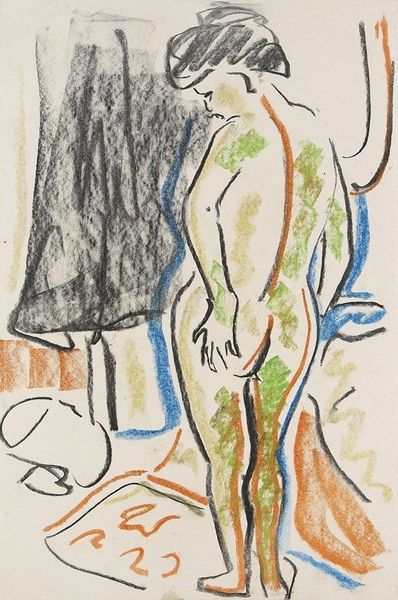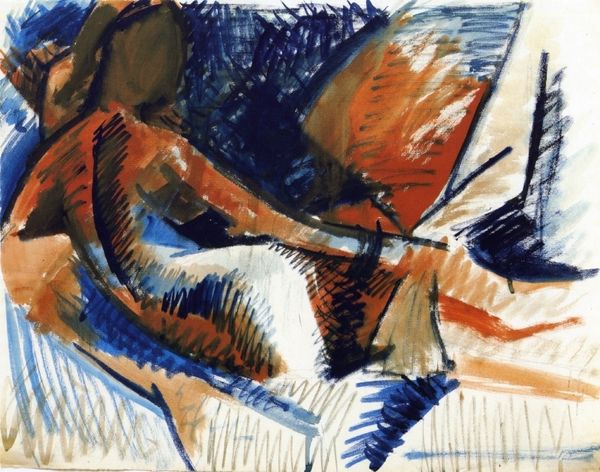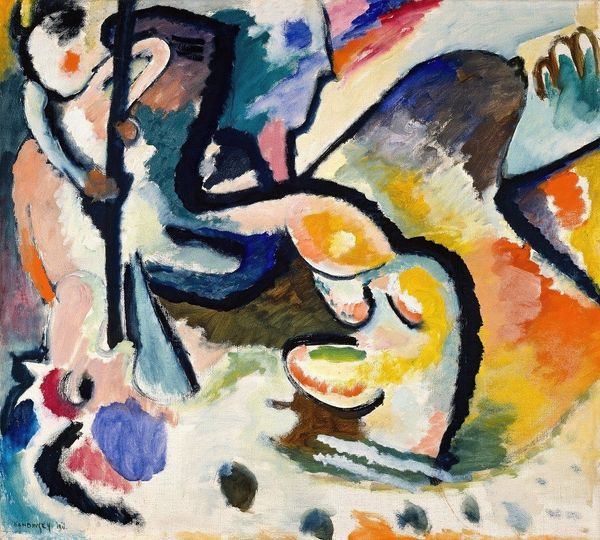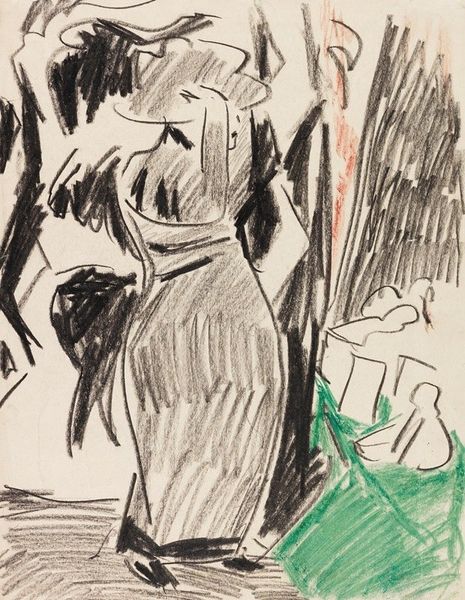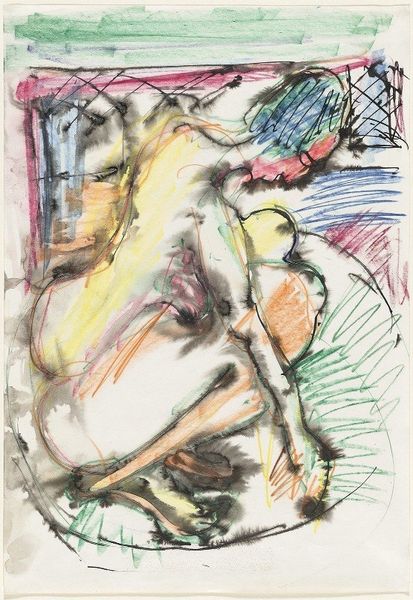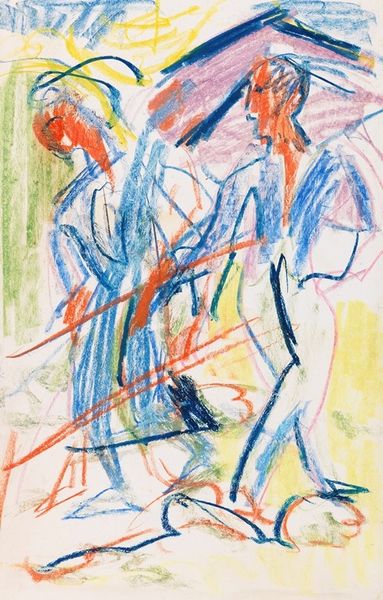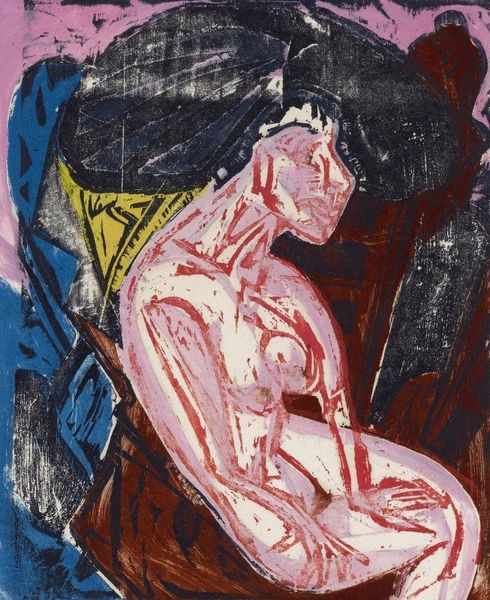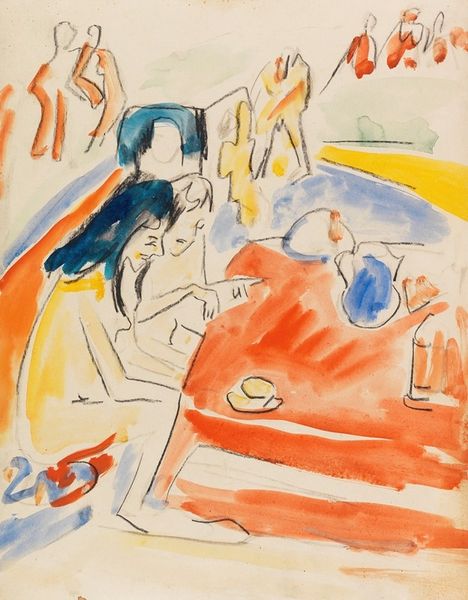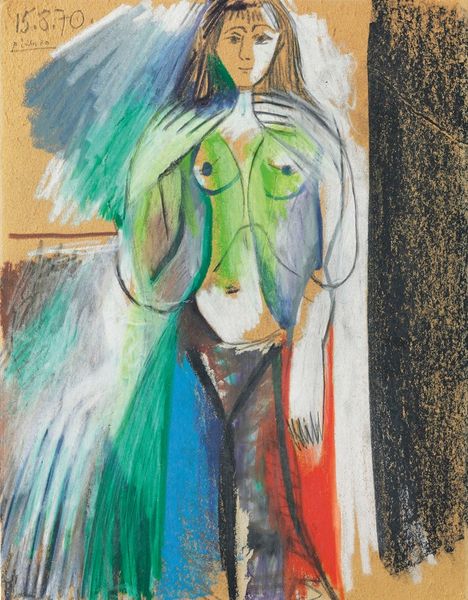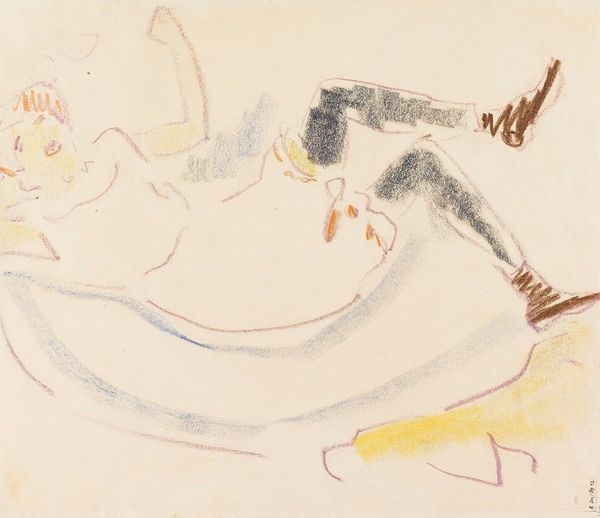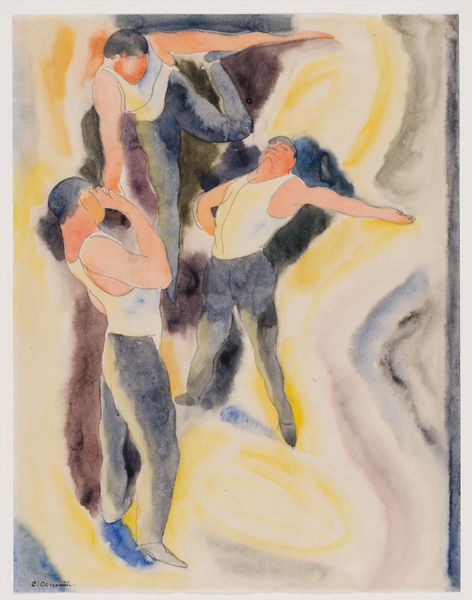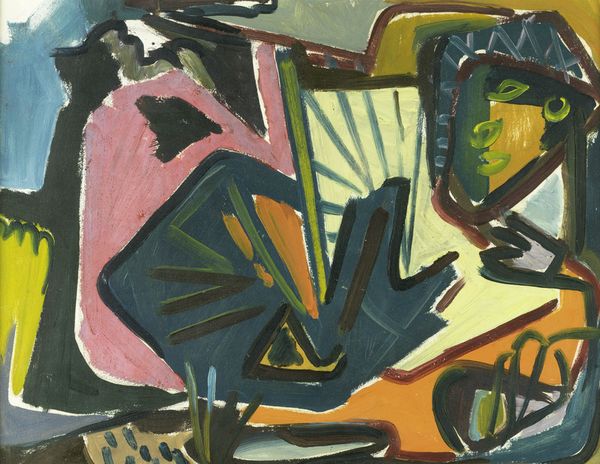
painting, dry-media, impasto, pastel
#
portrait
#
painting
#
german-expressionism
#
figuration
#
dry-media
#
oil painting
#
impasto
#
expressionism
#
pastel
#
portrait art
#
modernism
Copyright: Public Domain: Artvee
Curator: Looking at Ernst Ludwig Kirchner's "Seated Woman in the Studio" from 1909, the first thing I notice is the sketch-like quality, yet the overall impact feels quite powerful. Editor: Yes, it’s immediately striking. The almost frantic lines create a feeling of unease, even claustrophobia. The dark skirt contrasts heavily with the paler background. Curator: The work is composed of pastel and other dry media on paper. And contextually, Kirchner was a leading figure in the German Expressionist movement. His works often dealt with themes of alienation and the anxieties of modern urban life. He sought to capture the raw, unfiltered emotion of the modern experience. Looking at his depiction of the seated woman, it seems as though she also carries the anxieties of the time. Editor: Precisely, though it’s the recurring motif of the hat, really, that calls to me. We can view the large brim of the hat as shielding her—both literally and figuratively. Is she trying to hide from something, or someone, or is she actively cultivating her own private, separate interior space? The color blue is also noticeable, framing the outer edge of her hat as well as the chair beside her. Blue in artwork represents something unique as a cross-cultural and emotionally varying symbol, ranging from being calming and serene, to a source of anxiety, sorrow, or foreboding. Here, I'm seeing that tinge of foreboding because of the contrast with the solid and heavy darks of her skirt, which also suggests the somber emotional weight carried by women in society at this time. Curator: I agree. Considering gender dynamics in the early 20th century adds another layer. The figure is obscured, lacking defining details; the work becomes a representation of the restrictions and limitations placed upon women’s self-expression in a rapidly changing social landscape. The studio context becomes more important. Is she being observed or judged? Editor: And is she even present? Is this a dream? Kirchner's other pieces show how invested he was with urban anxieties and what that looks like on people walking on city streets. It adds layers here to how the hat symbolizes this push and pull between individuality and public surveillance. The work also pulls together more widely felt symbolic themes in that the seat is more of an ethereal sketch, calling to mind how stable this seated figure actually feels, as well. Curator: Considering these social themes adds so much richness to a work that appears at first glance to be a simple portrait sketch. Editor: Absolutely. It showcases how one symbol within a piece has roots in broader themes, emotions and cultural context.
Comments
No comments
Be the first to comment and join the conversation on the ultimate creative platform.
